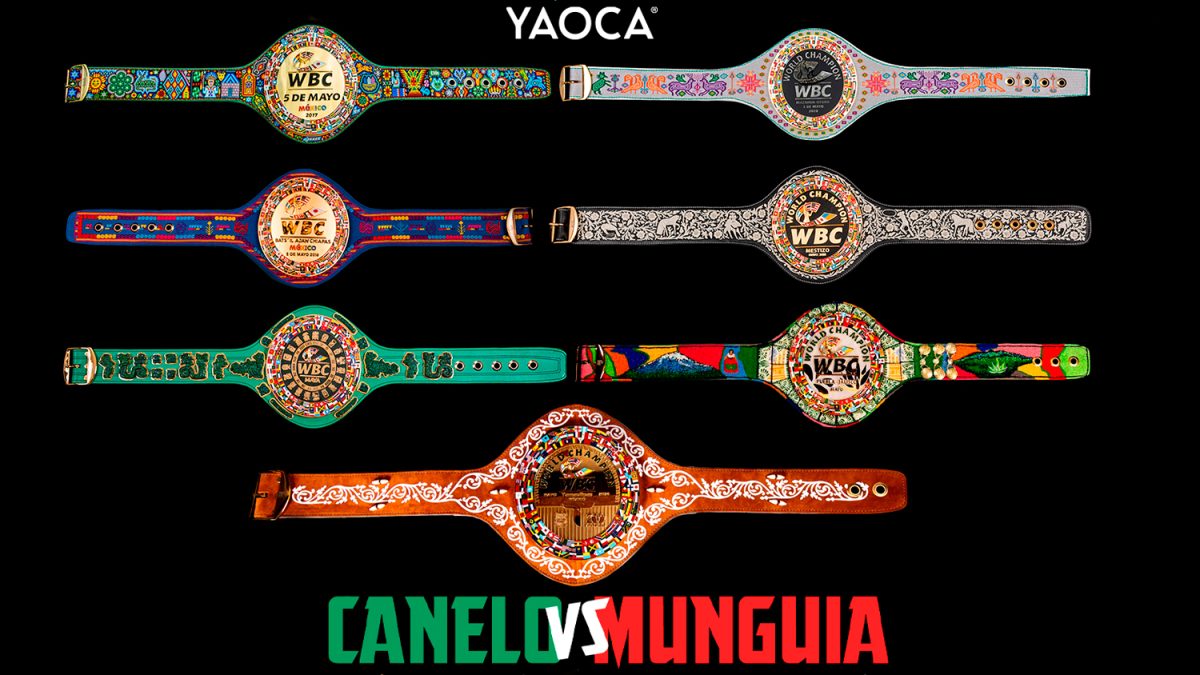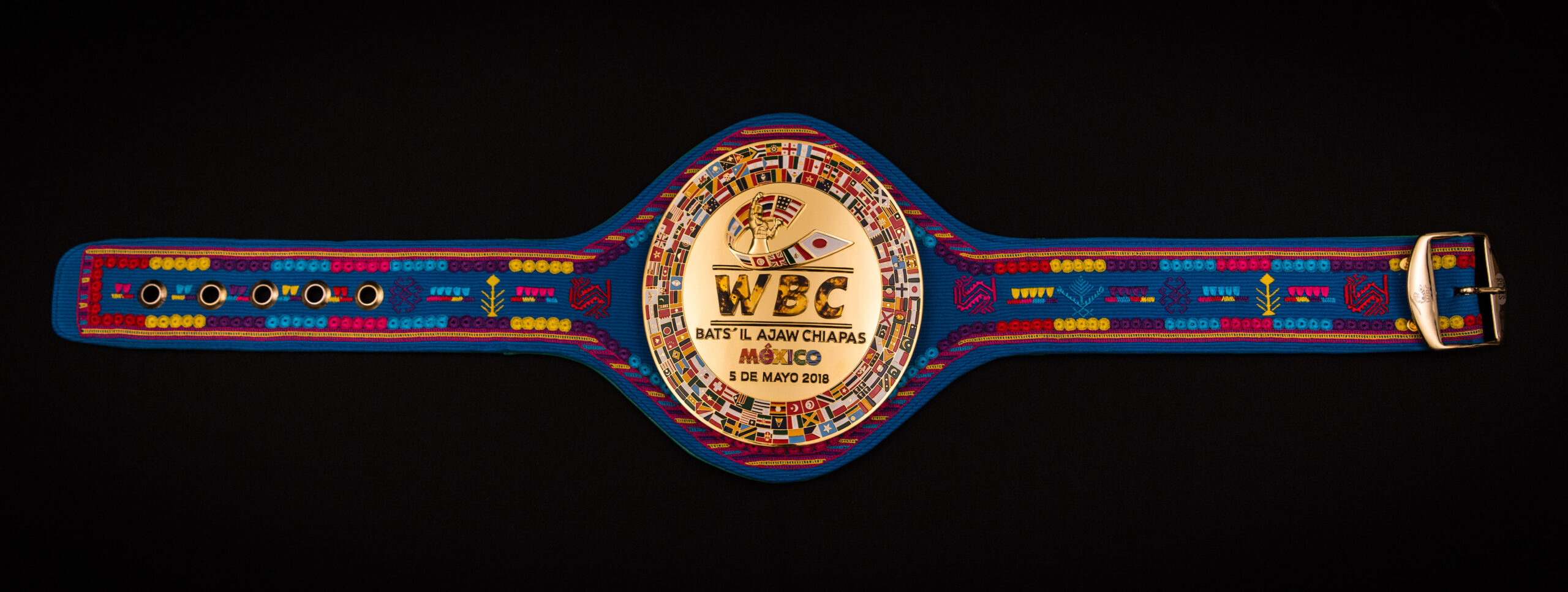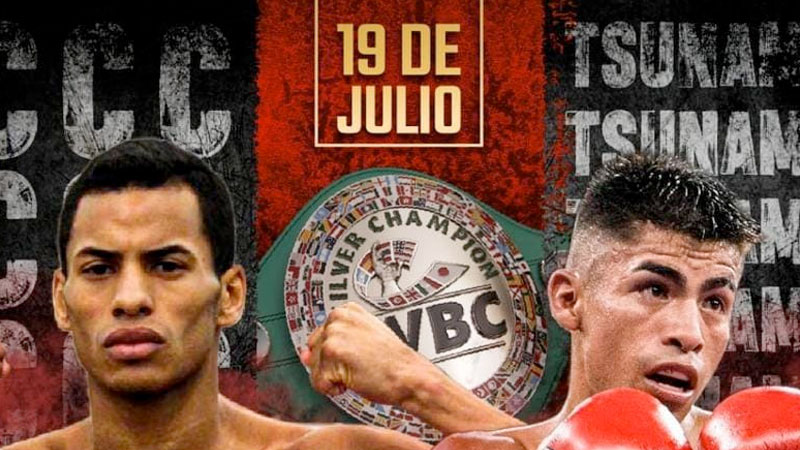
5 de Mayo WBC Commemorative Belts
World Boxing Council commemorative belts for May 5 and September 16, were created as a special trophy, which is bestowed upon the winner of great fights held around these two Mexican holidays, regardless of the nationality of the contenders.
World sports have a constant calendar with specific dates in which they present their most prestigious events, leading to a great expectation worldwide.
American Football has the Super Bowl in February, the World Series of Baseball takes place in October, the Champions League final is held in May.
In the case of boxing, something magical happens, as our sport has two dates on which we can see boxing at its zenith level: May 5 and September 16 (Commemorative dates for Mexicans).
These Special Belts concept was born in 2017, and since then, every year a culture is selected to create these belts and present a tribute from the WBC to the world boxing and Mexican costumes.
Here we proudly present you all of our 5 de Mayo commemorative belts so far:

“Huichol I” Belt
This handcrafted masterpiece was made by the Huichol people through the leadership of artist Luis de la Cruz López, who gave life to this mystical piece creating enigmatic worlds whose protagonists are moons, suns, trees, labyrinths, spirals, mountains and cosmic oceans that appear expressed. in the art, religion and the customs of the Huicholes.
It was disputed by Saul Alvarez and Julio Cesar Chavez Jr.
“Chiapaneco I” Belt
The “Bats’il Ajaw Belt” which means “True Hero“, was designed by Chiapas artisans. In each embroidery they sought to imprint the symbolism of this culture through iconic figures. Principally, the serpent, symbol of the earth and fertility. This edition was designed in blue hue, where the most representative symbols of this culture predominate.
It was disputed by Gennady Golovkin and Vanes Martirosyan.
“Maya I” Belt
The Mayan belt represents the leadership of the jaguar warriors in search of recognition in the eyes of Kukulcan, the deity represents air and water, two of the most fluid elements in nature, assimilating the movements that take place inside the ring of boxing.
This belt has 4 elements on the left side that represent “Warrior“, “Jaguar“, “Leader” and “Fame“; while on the right side Kukulkan is represented. The belt buckle has the Mayan calendar, which was so important that there is evidence of its use throughout Mesoamerica.
Saul “Canelo” Alvarez and Daniel Jacobs disputed it

“Mazahua” Belt
This belt was dedicated to the Heroes of Humanity, as a symbol of recognition of the pandemic that changed the world. It has the purpose of remembering all those who fought with their hearts to save many lives, dignify, and give faith and hope to all.
The belt is a piece of popular art from the State of Mexico, the result of the synergy between Mexican design and embroidery, created by the creative hands of Angelica and Lilia Reyes Martínez, who each embroidered one end of the belt.
The colors represent the harmony based on the love and affection of the family, the diversity, the fertility of the valleys; inspiration to protect women’s rights and freedoms; the future, the desire and the drive of young people.
The center of the belt is formed by an obsidian mirror from Teotihuacán in the form of a smoking mirror where you can see the God Tezcatlipoca, emblem of his warrior dedication, strength for battle and symbol of nocturnal power.

Mestizo Belt
The Mestizo belt is inspired by charreria. It has embroidered the luck charra Cala de Caballo, a task in which the good rein and education of the horse is shown; it also carries two Friesian horses on three legs, the presence of the escaramuza which is very important since it is the women representation in this belt and in the charrería.
Saul “Canelo” Alvarez and Billy Joe Saunders disputed it.
Puebla – Jalisco Belt
The belt possesses a mixture of color, from fiery reds and oranges tones to light blues and greens; However, this unique piece has intricate details that make it special. The iconic China Poblana is located on one side, which represents a symbol of strength and resistance in Mexican culture. And behind it, lays the majestic Popocatepetl volcano, as a testimony of power and nature beauty.
On the Jalisco side, the belt pays homage to the region’s most famous crop: Agave (Plant that produces the typical Mexican liquor Tequila. It lays as a symbol of hard work and celebration. Likewise, in the button panels there´s the charro suit, a symbol of strength, elegance, and poise; Finally, the volcano of Tequila is presented as a representation of the beauty of the Mexican West. It wa contested by Saul “Canelo” Álvarez and John Ryder.

Tamaulipas Belt
The Tamaulipas belt has been designed and made by the family workshop “Haeberli Piel Artesanía Tamaulipeca”; who in their ornamentation have been inspired by the beautiful Cuera Tamaulipeca, a typical costume that represents this beautiful state. Made of fine suede, its leather embroidery represents the flora and vegetation of the fields of Tamaulipas. The perfect conjunction of all the elements that make it up has been achieved, having the traditional bone buttons as a representative detail; called “Tarugos”. The work carried out required the drawing of the skin and the ornamentation; the cutting of the line by hand; and its adhesion and then sew it. The central plate, made by “Imperio de Metal”, was manufactured using a special process where different artistic influences were combined in order to highlight elements of Tamaulipas. It will be conteted by Saul Canelo Alvarez vs. Jaime Munguia.
![]()
Related posts
test





